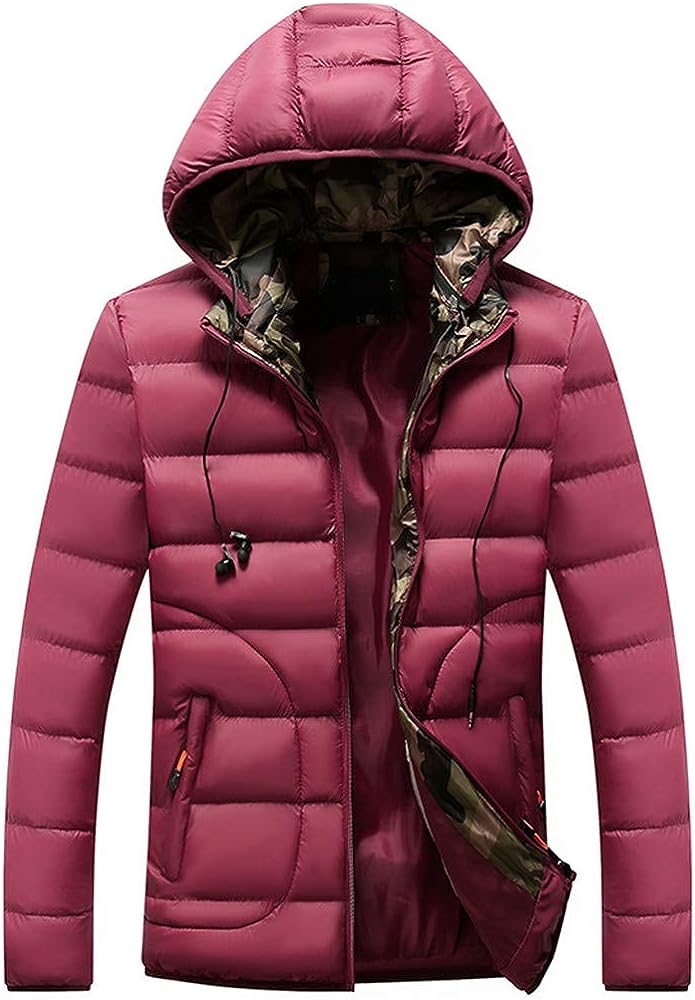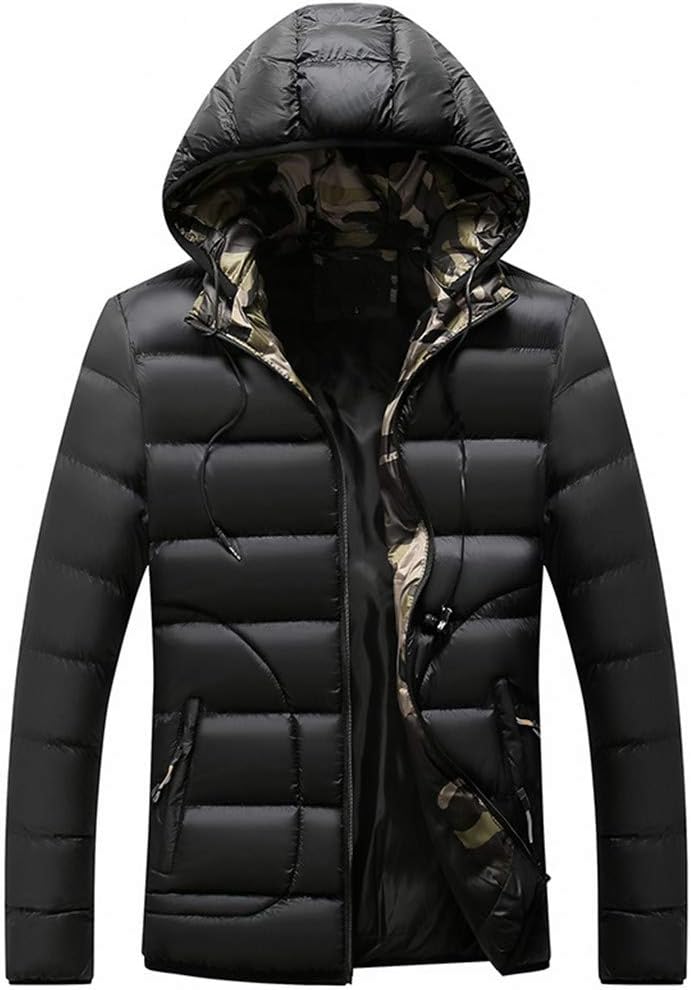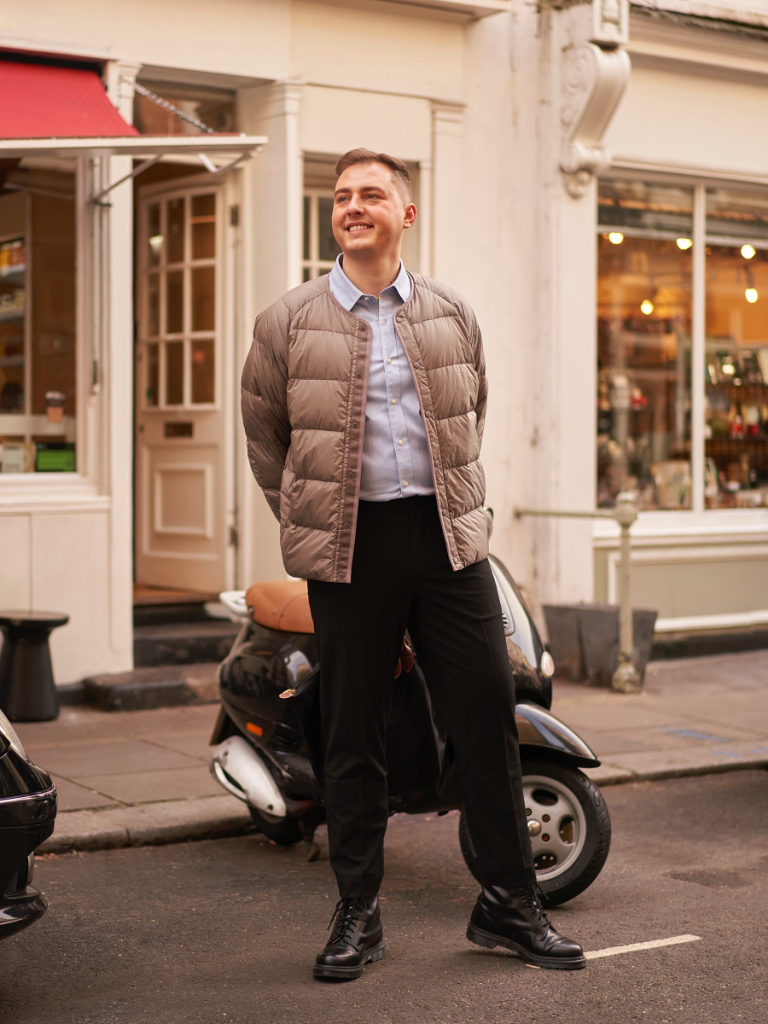 When it comes to staying warm in cold weather conditions, layering is key. By layering clothing items of varying thicknesses and materials, you can create a barrier against the cold and trap body heat. Men’s down jackets are a popular outer layer for their exceptional insulation, but layering techniques can enhance their warmth even further. In this article, we will explore layering techniques with men’s down jackets for optimal warmth and comfort in the coldest temperatures.
When it comes to staying warm in cold weather conditions, layering is key. By layering clothing items of varying thicknesses and materials, you can create a barrier against the cold and trap body heat. Men’s down jackets are a popular outer layer for their exceptional insulation, but layering techniques can enhance their warmth even further. In this article, we will explore layering techniques with men’s down jackets for optimal warmth and comfort in the coldest temperatures.
Base Layer
The base layer is the layer closest to your skin. Its primary function is to wick away moisture and keep you dry. A wet base layer can reduce insulation efficiency, making you feel colder even if you’re wearing a warm jacket.
When selecting a base layer, choose fabrics that are breathable, moisture-wicking, and quick-drying. Merino wool and synthetic fabrics are popular choices for base layers. They provide warmth without adding bulk and are highly effective at wicking away moisture.
Mid-Layer
The mid-layer is the layer between the base layer and the outer layer, providing additional insulation and warmth. The mid-layer’s thickness and material depend on the temperature and activity level.
For moderate temperatures, a lightweight fleece or synthetic jacket can serve as a mid-layer. These materials provide added warmth without adding bulk. For colder temperatures, a thicker fleece or wool sweater can provide additional insulation.
Some mid-layers have added features like windproof membranes or water-resistant coatings, providing added protection against the elements. These features can enhance insulation efficiency and keep you warmer in harsh conditions.
Outer Layer
The outer layer is the final layer and serves as protection against the elements. Men’s down jackets are a popular choice for outer layers due to their exceptional insulation and lightweight design.
When selecting an outer layer, consider the insulation quality, fill power, and water-resistant features. Down jackets with a higher fill power provide better insulation and warmth. Water-resistant features like a durable water repellent (DWR) coating or waterproof membrane can prevent the down from becoming saturated and losing its insulating properties.
Layering Techniques
Layering techniques with men’s down jackets depend on the temperature, activity level, and personal preference. Here are some layering techniques for optimal warmth and comfort in cold weather conditions:
Three-Layer System
The three-layer system consists of a base layer, mid-layer, and outer layer. This system provides excellent insulation efficiency and allows for easy adjustment to changing weather conditions.
For moderate temperatures, a lightweight base layer, mid-layer, and down jacket are sufficient. When the temperature drops, a thicker mid-layer can be added for added insulation. This layering technique is versatile and can accommodate different activity levels and weather conditions.
Four-Layer System
The four-layer system is ideal for extremely cold temperatures or activities with low activity levels. It consists of a base layer, insulation layer, mid-layer, and outer layer.
The insulation layer is a thick and warm layer, providing added protection against the cold. A thick fleece or wool sweater can serve as an insulation layer. This layering technique is suitable for outdoor activities like ice fishing or winter camping.
Double Down Jacket
For temperatures below freezing, a double down jacket can provide exceptional warmth and insulation. This layering technique involves wearing two down jackets, with a thinner one serving as a mid-layer and a thicker one as an outer layer.
This technique is ideal for low activity levels or stationary activities like ice fishing or watching outdoor events. It provides maximum insulation and warmth, but it can be bulky and restrict movement.
Accessories for Layering
In addition to layering clothing items, accessories can also enhance insulation efficiency and keep you warmer in cold weather conditions. Here are some accessories to consider for optimal warmth:
Insulated Hat: A heat-trapping hat is essential for keeping your head and ears warm. Look for insulated hats with ear flaps or a fleece lining for added protection.
Neck Gaiter: A neck gaiter or scarf can provide added insulation and protection against the wind. A wool or fleece neck gaiter is an excellent choice for added warmth.
Gloves: Insulated gloves are essential for keeping your hands and fingers warm. Look for gloves with a waterproof outer layer and a warm insulation layer for optimal protection.
Footwear: Insulated boots are essential for keeping your feet warm and dry. Look for boots with a waterproof outer layer and insulated lining for added warmth.

 When it comes to outdoor activities, having the right gear is essential for comfort, performance, and safety. Among the many pieces of equipment available, men’s down jackets play a crucial role. These jackets offer insulation, versatility, and durability, making them a staple for outdoor enthusiasts. In this article, we will explore the role of men’s down jackets in outdoor activities and why they are a must-have for anyone venturing into the great outdoors.
When it comes to outdoor activities, having the right gear is essential for comfort, performance, and safety. Among the many pieces of equipment available, men’s down jackets play a crucial role. These jackets offer insulation, versatility, and durability, making them a staple for outdoor enthusiasts. In this article, we will explore the role of men’s down jackets in outdoor activities and why they are a must-have for anyone venturing into the great outdoors. Winter sports enthusiasts know the importance of having the right gear to tackle the cold temperatures and harsh conditions on the slopes. Among the essential items in a winter sports wardrobe, men’s down jackets play a crucial role. These jackets provide both warmth and functionality, allowing athletes to perform at their best while staying protected from the elements. In this article, we will explore the role of men’s down jackets in winter sports and why they are a must-have for any outdoor adventure.
Winter sports enthusiasts know the importance of having the right gear to tackle the cold temperatures and harsh conditions on the slopes. Among the essential items in a winter sports wardrobe, men’s down jackets play a crucial role. These jackets provide both warmth and functionality, allowing athletes to perform at their best while staying protected from the elements. In this article, we will explore the role of men’s down jackets in winter sports and why they are a must-have for any outdoor adventure. When it comes to winter outerwear, men’s down jackets are a popular choice for their unbeatable warmth and comfort. The down insulation provides exceptional insulation, keeping you cozy even in the coldest of temperatures. However, it’s not just about staying warm; style is equally important. Men today are looking for down jackets that not only provide functionality but also make a fashion statement. In this article, we will explore the balancing act of style and functionality when it comes to
When it comes to winter outerwear, men’s down jackets are a popular choice for their unbeatable warmth and comfort. The down insulation provides exceptional insulation, keeping you cozy even in the coldest of temperatures. However, it’s not just about staying warm; style is equally important. Men today are looking for down jackets that not only provide functionality but also make a fashion statement. In this article, we will explore the balancing act of style and functionality when it comes to  Men’s down jackets are an essential part of any winter wardrobe. Not only do they provide warmth and comfort during the colder months, but they also serve as a statement piece for your winter style. When choosing a down jacket, there are several factors to consider, including color and style. In this article, we will discuss the best colors and styles for
Men’s down jackets are an essential part of any winter wardrobe. Not only do they provide warmth and comfort during the colder months, but they also serve as a statement piece for your winter style. When choosing a down jacket, there are several factors to consider, including color and style. In this article, we will discuss the best colors and styles for  Men’s down jackets are a popular choice for winter wear due to their excellent insulation properties, lightweight construction, and durability. However, owning a down jacket also means taking proper care of it to ensure it remains in top condition.
Men’s down jackets are a popular choice for winter wear due to their excellent insulation properties, lightweight construction, and durability. However, owning a down jacket also means taking proper care of it to ensure it remains in top condition. When it comes to choosing the right men’s down jacket, sizing and measurements are crucial factors that must be taken into consideration. Finding the perfect fit is essential not only for comfort, but also for optimal performance. A poorly fitting down jacket can diminish the effectiveness of the insulation, leaving you susceptible to the cold and defeating the purpose of the jacket altogether.
When it comes to choosing the right men’s down jacket, sizing and measurements are crucial factors that must be taken into consideration. Finding the perfect fit is essential not only for comfort, but also for optimal performance. A poorly fitting down jacket can diminish the effectiveness of the insulation, leaving you susceptible to the cold and defeating the purpose of the jacket altogether. When it comes to staying warm and comfortable during the colder months, a down jacket is an essential piece of outerwear for men. Known for their exceptional warmth and lightweight design, down jackets are a popular choice for outdoor enthusiasts and those who simply want to stay cozy during the winter season. However, with numerous options available, it can be overwhelming to choose the right one. In this article, we will explore different types of
When it comes to staying warm and comfortable during the colder months, a down jacket is an essential piece of outerwear for men. Known for their exceptional warmth and lightweight design, down jackets are a popular choice for outdoor enthusiasts and those who simply want to stay cozy during the winter season. However, with numerous options available, it can be overwhelming to choose the right one. In this article, we will explore different types of  When it comes to choosing the perfect men’s down jacket, there are a lot of factors to consider. Down jackets are popular because they are extremely warm, lightweight, and packable. They are perfect for cold weather activities like skiing, snowboarding, and hiking, as well as everyday wear. However, with so many options available, it can be difficult to know where to start. In this article, we’ll break down the key factors to consider when choosing a men’s down jacket so that you can find the perfect one for your needs.
When it comes to choosing the perfect men’s down jacket, there are a lot of factors to consider. Down jackets are popular because they are extremely warm, lightweight, and packable. They are perfect for cold weather activities like skiing, snowboarding, and hiking, as well as everyday wear. However, with so many options available, it can be difficult to know where to start. In this article, we’ll break down the key factors to consider when choosing a men’s down jacket so that you can find the perfect one for your needs. When the temperature drops and the winter chill sets in, a reliable and warm jacket is an essential piece of clothing for any man. Among the various options available, down jackets have gained tremendous popularity for their exceptional insulation and comfort. In this comprehensive guide, we will explore everything you need to know about men’s down jackets – from their construction and materials to their different styles and care instructions.
When the temperature drops and the winter chill sets in, a reliable and warm jacket is an essential piece of clothing for any man. Among the various options available, down jackets have gained tremendous popularity for their exceptional insulation and comfort. In this comprehensive guide, we will explore everything you need to know about men’s down jackets – from their construction and materials to their different styles and care instructions.